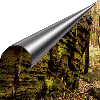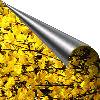

 | Biebrzanski National Park |  |




 | Biebrzanski National Park |  |


The sandpiper (Philomachus pugnax) is the symbol of the Park; it is one of the most characteristic birds protected in this region. Biebrzanski National Park was established on September 9, 1993. This National Park covers a large part of the Biebrza proglacial valley, including most of the area of the peatland. Its total area of 59,223 ha comprises of parts belonging in the Lomza (45,572 ha), Bialystok (6,048 ha), and Suwalki (7,603 ha) voivodships. The park protection zone totals 66,824 ha and is also divided between the Lomza (33,979 ha), Bialystok (17,812 ha) and Suwalki (15,033 ha) voivodships. Within the Park area, 42,495 ha are occupied by the wild and cultivated meadows, 14,863 ha by forest, 972 ha by waters, 438 ha by roads, 299 ha by farmland, 125 ha by ditches and 21 ha by built-up land. The Biebrzanski National Park is the biggest among Polish National parks.
The main task of the Park is to protect the variety of species of fauna and flora within the existing ecosystem, including various kinds of peats and peatbogs. An elaborate ecosystem of the Biebrza River valley can exist only if proper water conditions are maintained. This requires that both conservation within the park and adjacent areas, as well as necessary protective measures be implemented in those areas, where man has already influenced the environment.
Water management is of particular importance in maintaining the natural environment within the valley. Therefore, it must include not only the Park and its protection zone, but also the entire Biebrza River basin. It should be aimed at ensuring a sufficient amount of water in the river valley, so that the peatland ecosystems can function properly. This task has been implemented according to the plan, which was defined on the basis of continuous observation of natural conditions in the Park, and studies on the condition of its habitats.
Overall, the protective measures are based upon the natural adjustment processes. The action plan includes the perpetuation of stages of the ecological succession, as well as a planned interference in the negative succession processes and changes in water conditions, which can threaten the biological diversity.
Natural values
The Biebrza River Valley is the largest and the best preserved area of low bogs and forest raised bogs in the temperate biogeographical zone. The most valuable feature of the Biebrza Marshes is its perfectly formed and well preserved diagonal and longitudinal ecological zonation. It is based on the toposequence of plant communities from the river banks to the edges of the Valley. This toposequence is primarily shaped by water conditions. Three zones can be distinguished in the cross-section of the Valley :
- The immersion zone with sedge swamps, Glyceria aquatica swamps, and Phalaris arundinacea swamps,
- The immersion-emersion zone with tussock communities dominated by Carex appropinquata, which is often accompanied by Carex Hudsonii,
- The emersion zone (outside the annually flooded terrain) dominated by moss swamp communities (Caricetum limoso-diandrae and Caricetum rostrato-diandrae) with well developed moss sod.
The outermost community in this series is the bog alder forest. The diagonal ecological zonation is most fully developed in the southern basin of the Biebrza River Valley, where the relationship between the plant species growing in the habitat, and the conditions in such particular habitat is clearly evident. The Biebrza Valley has water habitats, open bogs without any trees or bushes, rush forest, and post-bog (with lowered ground water level) habitats. There are 43 plant associations, which represent 14 communities, 11 orders, and 8 classes. There are some glacial epoch survivors and some boreal period species, associated with the cold northern climate. Rare species include lousewort, saxifrage, Jacob's ladder, cottongrass and rare bryophytes. The natural biotopic conditions resulted in the formation of ecological zones in the river valley both lengthwise and crosswise.
The ecological characteristics of the Biebrza Marshes as well as their vastness, contributed to the survival of the fauna, typical of natural swamp and water ecosystems, which is nearly extinct elsewhere. The Biebrza Marshes provide a good living environment for elk, beaver, wolf, crane, black grouse, double snipe, dunlin, jack snipe, whooper, swan, widgeon, and many other species. The marshes are also an important resting place for birds that migrate from Northern and Central Europe to Africa and Asia. Here they can find peaceful feeding grounds. The number of water and mud birds that stop here is many times higher than in other river valleys of Poland and the whole Europe. About 235 bird species have been found here, including 157 breeding species and, possibly an additional 19, breed here as well. They live in three ecological zones: open peatbogs, brushwood bogs, and bogmoors. The most important species are dunlin, ruff, double snipe, jack snipe, ferruginous duck, white-winged tern, little gull, aquatic warbler, black grouse, black-tailed godwit, whooper swan, mute swan, white-backed woodpecker, black tern and hen harrier. There are also white-tailed eagle, booted eagle, great spotted eagle, lesser spotted eagle, marsh harrier, Montagu's harrier, curlew, short-toed eagle, and many other species. Some of them, for example jack snipe or little gull, can live only in the Biebrza Marshes environment and are never seen in other parts of Central Europe. Of the 56 breeding bird species considered as dying out or in danger of extinction, which are listed in the Polish Red Data Book, some 21 species live in the Biebrza Marshes.
Big mammals are represented by elk, wolf, beaver, river otter, muskrat, fox, raccoon dog, badger, pine marten, polecat, roe-deer, and wild boar. There are numerous small mammals, represented by 17 species living in various ecological zones. Alder forests and tufted sedges over the marshland are inhabited by a large populations of vole (Microtus oeconomus), harverst mouse, bank vole, and dormouse. Another vole (Microtus agrestis) and shrew, reside in birch and alder carrs. Sedgy meadows are inhabited by water shrews and voles (Arvicola terrestris). Common and little shrews dwell in the rushes.
In the spring and summer, the air swarms with butterflies and insects. They have not yet been systematized. It is indicated by occasional random observations, some rare species of butterfly occur among them.
Many fish species live in the Biebrza waters and numerous old river bends. Some 36 species of fish and lamper eels, which represent 11 families, have been found here. The families of the Cyprinidae, Cobitidae, Percidae, Gasterosteidae, Gadidae, Anquillidae, Petromyzonidae, Salmonidae, Esocidae, Siluridae and Cottidae include the greatest number of species. The Biebrza River contains a unique species of Ukrainian lamper eel, which is absent from other Polish rivers, and commonly met in the eastem part of the Black Sea catchment area. Five types of the aquatic environment, differing both in the prevailing species and quantities of fish have been identified in the Biebrza River basin. They are: old river beds connected with the river, those disconnected with it, and flowing water environment further divided into the lower-middle Biebrza (15 to 35 m wide), the upper Biebrza (10 to 15 m wide) and the headwaters and tiny tributaries of the Biebrza up to 10 m wide.
From all the studies conducted hitherto on the natural systems in the Biebrza valley, it appears, that the Biebrza Marshes may serve as a highly valuable object of natural and ecological research, which is quite rare nowadays. Although extensive material has already been gathered, many important issues have not yet been researched. Some of these issues, upon further study, will mark the direction of protective actions in this area.
The most atrractive site in the Park is the Red Marsh (strict reserve), one of the biggest marsh area in Europe.
Vegetation
In the Biebrza Marshes 43 plant communities were identified. Those of particular interest include those that shape the physiognomy of the Valley, and those which are rarely found in other regions. Among the water communities the Hydrocharito-Stratiotetum (composed of Stratiotes aloides, which is an indicative species of clear and unpolluted waters, and Hydrocharis morsus-ranae), as well as the Myriophyllo-Nupharetum (with Nymphaea alba) are the most interesting associations.
The banks of old river-bends are overgrown with reed associations Scirpo-Phragmitetum with Phragmites communis, Typha latitolia, and Schoenoplectus lacustris. Along the Biebrza river-bed, large areas are covered with reed swamps dominated by Glyceria aquatica. Less common are the reeds composed of Scirpo-Phragmitetum association (with Acorus calamus and Equisetum fluviatile) and the association with Oenanthe aquatica and Rorippa amphibia. Among the reed communities belonging to the same order and class, but to the alliance Magnocaricion, are particulary interesting sedge swamps, which grow in large areas in the Valley. They are dominated by Caricetum Hudsonii association (occurring in the southern basin) and Caricetum gracilis association.
In the immersion-emersion zone, the sedge-moss swamps Peucedano-Caricetum appropinquatae (with Carex appropinquata and Peucedanum palustre) are widespread. The grass swamp Stellario-Agrostietum caninae, dominated by Agrostis canina and Stellaria palustris, is an interesting and declining association in the Valley.
The Biebrza Marshes abound also in forests, mainly bog alderwoods, bog birch forests, river-side flood-plain forests (with black alder and ash), and the pine bog forests. The mineral swells, called grad or gradzik, are numerous among the marshes. They are covered with a mixture of vegetation typical of both forest and open area communities. Many rare plant species grow on the gradzik swells.
Some extremely rare species of plants have found suitable living conditions in the Biebrza Marshes. The pristine character of these marshes allowed the species typical of glacial flora and of the boreal zone to survive here. The most valuable and rarest species are: Pedicularis sceptrum-carolinum, Cypripedium calceolus, Orchis incarnata, other orchids Saxifraga hirculus, Polemonium coeruleum, Eriophorum gracile, Senecio paludosus, Trichophorum alpinum, Scolochloa festucacea, Betula humilis, Salix lapponum, Viola stagnina, Potentilla norvegica, and Sweertia perennis.
Breeding avifauna
The fauna of breeding birds of the Biebrza River Valley is characterized by the exceptional biodiversity in comparison to both Polish and Central European communities of birds. In the area of about 1,300 km2 as many as 185 species of breeding birds were recorded. This makes up over 80 % of the entire Polish fauna of breeding birds. This high number is related primarily to the great diversity of landscapes in the Biebrza Valley and the good preservation of all types of pristine wetland and marshland habitats. Interesting species of breeding birds are bittern, little bittern, black stork, greylag goose, teal, wigeon, pintail shoveler, and white-tailed eagle.


If you know any WWW sites that reference Polish National Parks please e-mail them to me.
Your input will be greatly appreciated.